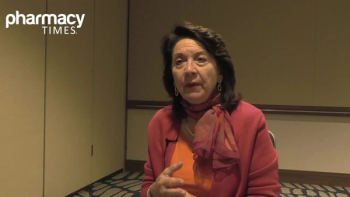
AI-enabled Algorithms, Technology Can Address Workforce Burnout
AI-enabled algorithms can also augment clinical decision making for health care professionals using real-time data analysis and decision support to treat patients more efficiently and accurately.
Pharmacy Times® interviewed Matthew Manning, MD, FASTRO, a radiation oncologist at Cone Health Cancer Center, on the ACCC Annual Meeting & Cancer Center Business Summit facilitated workshop he will be participating in titled “AI-Enabled Clinical Decision Support Tools.”
Pharmacy Times: How can AI-enabled algorithms help reduce burnout and mitigate workforce shortages, and have these strategies been adopted yet in clinics?
Matthew Manning, MD, FASTRO: So, AI-enabled algorithms and technology can improve workforce efficiency and reduce workforce burnout. And there are multiple ways that this can happen in the future, including streamlining administrative tasks, where clerical intake staff that have to collect clinical information as well as billing and insurance information, that that data could be aggregated and processed in a more automated way to reduce their menial labor and allow them to concentrate on higher-order functions. And AI-enabled algorithms can augment clinical decision making for providers and health care professionals providing real time data analysis and decision support to help treat patients more efficiently and accurately. And this has the potential to reduce burnout. Improving workflows, AI algorithms can analyze data, identify inefficiencies in clinical workflows, and potentially suggest improvements.
AI can also help the workforce by supporting patient engagement. AI algorithms can provide patients with personalized health information, reminders, and self-management tools to help the patients stay engaged in their care and reduce the burden on health care professionals. In addition, AI algorithms can help address workforce shortages by providing virtual care and remote monitoring. Imagine a chatbot nurse that looks after you at home, allowing healthcare professionals to care for more patients without increasing their workload or their burden. I will say that there are elements of clinical decision support tools that have the potential to increase burnout, and this includes things like alert fatigue, as providers use electronic medical records. If the alerts become too much of a delay to care or too much of an interruption to actual care, then they can potentially increase burnout. But moving forward, I think that's a well-known risk that can be mitigated through design.
Pharmacy Times: How can AI-enabled algorithms help standardize care to address health inequities, and has there been progress in this application of the technology?
Manning: So, AI-enabled algorithms can help us to process information that drive inequities, such as patient zip codes. In your community, there may be a 10-year lifespan difference between a wealthy zip code and a zip code of poverty. And zip code information along with race, along with socioeconomic status, insurance status—those bits of information are not always available or brought to bear with clinicians. But using AI-enabled algorithms, we can risk-stratify patients for their risk of no shows for treatment, their risk of transportation issues, food insecurity. And if you have the ability to identify those risks and identify which patients may be at higher risk, you can help to address those inequities. And AI may be helpful at doing that.
In its current state, some health systems do use tools around geography, socioeconomics, to help allocate resources to certain populations. In one pilot study done here at Cohn health, our hospital would identify patients by zip code and socioeconomic status and also look at their personal no-show rate in the past and within the health system. And if patients were beginning a course of daily radiation treatments, which may take several weeks, and the patient may have transportation issues, the health system identified which patients were at highest risk to provide transportation support using a rideshare pilot program. In doing so, our 2 zip codes that have the highest no-show rate of 12% and 16% were reduced to between 1% and 2% no-show using the rideshare transportation pilot.
Pharmacy Times: How can AI-enabled algorithms improve care for at-risk and underserved patients?
Manning: So, in current state, there are health disparities in biomarker testing for patients with cancer. We know that there are underprivileged patients and patients of color who are not receiving biomarker testing for their biopsies to the same degree that our more privileged patients do. And so, using AI enabled algorithms, we have the potential to remind providers and implement programs that help to provide less variation in care and better quality of care to everyone that we serve.
Pharmacy Times: What is the role of the oncology pharmacist in the implementation and rollout of these technologies in health care systems?
Manning: As AI-enabled algorithms become more widely available, we envision that oncology pharmacists will be central to how they're applied. And in particular, many institutions have begun using molecular tumor boards, where decisions and care are more related to targetable genetic mutations of tumors and our pharmacy colleagues are the people who are driving these molecular tumor boards to make sure the best drugs are selected for the best use.
Newsletter
Stay informed on drug updates, treatment guidelines, and pharmacy practice trends—subscribe to Pharmacy Times for weekly clinical insights.
















































































































































































































